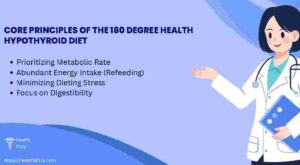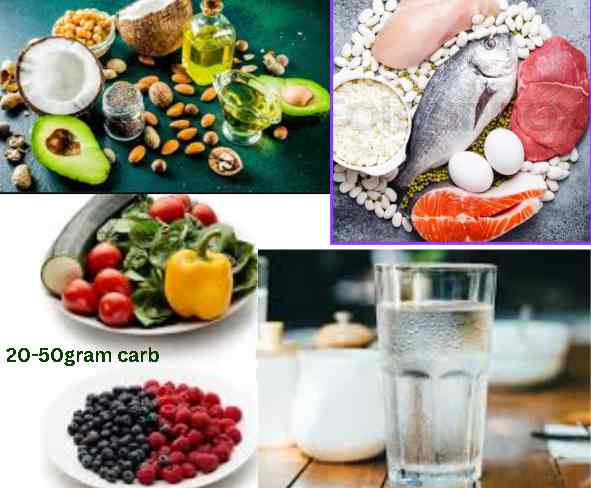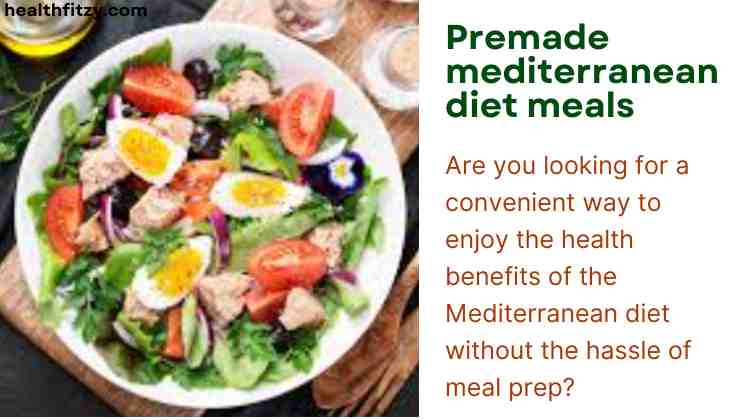Matt Stone 180 Degree Health Hypothyroid Diet: 5 Controversial Keys to Unlock Your Metabolism
Understanding Matt Stone 180 Degree Health Approach to Hypothyroidism
Hypothyroidism, characterized by an underactive thyroid gland, affects millions, often leaving them searching for effective dietary solutions. Among the various approaches, Matt Stone’s 180 Degree Health hypothyroid diet stands out for its unconventional focus on metabolic restoration rather than traditional calorie restriction or specific macronutrient elimination. Stone, through his research platform “180 Degree Health,” challenges mainstream narratives, proposing that chronic dieting, stress, and undereating are primary drivers of metabolic dysfunction, including thyroid issues. His dietary philosophy aims not just at symptom management but at fundamentally resetting metabolic rate.
Core Principles of the 180 Degree Health Hypothyroid Diet
Stone’s approach diverges significantly from typical “thyroid diets.” Instead of focusing solely on eliminating goitrogens or gluten (though individual sensitivities are acknowledged), it centers on broader metabolic rehabilitation:

-
H3: Prioritizing Metabolic Rate: The cornerstone belief is that a chronically low metabolic rate (often caused by repeated dieting, chronic stress, or prolonged undereating) depresses thyroid function. The primary goal is to raise metabolism.
-
H3: Abundant Energy Intake (Refeeding): Contrary to restrictive diets, Stone advocates for a period of increased caloric intake, particularly from easily digestible carbohydrates and sufficient protein. This “refeeding” phase aims to signal safety to the body, reduce stress hormones (like cortisol), and jumpstart thyroid hormone production (T4 to T3 conversion).
-
H3: Minimizing Dieting Stress: Chronic calorie restriction is seen as a major stressor that lowers core body temperature and metabolic rate, directly impairing thyroid function. The diet emphasizes eating to satiety and beyond, especially initially, to counteract this.
-
H3: Reducing “Non-Caloric” Stressors: While food intake is increased, Stone also emphasizes reducing other metabolic stressors: excessive exercise (especially intense cardio), emotional stress, sleep deprivation, and exposure to extreme cold.
-
H3: Focus on Digestibility: During the metabolic recovery phase, easily digestible foods are prioritized to minimize gut stress and ensure efficient nutrient absorption, which is crucial for thyroid hormone synthesis and conversion.
What Does the Diet Involve? Foods and Practices
The 180 Degree Health hypothyroid diet isn’t a rigid meal plan but a set of guiding principles, especially during the initial metabolic recovery phase:

-
H3: Emphasized Foods:
-
Cooked Starches: White rice, potatoes (white and sweet), well-cooked oats, pasta (for those tolerating gluten). These provide readily available glucose without excessive fiber burden.
-
Fruit Juice & Ripe Fruits: Orange juice, apple juice, bananas, mangoes, melons (easy sugars for quick energy).
-
Dairy (if tolerated): Whole milk, cheese, ice cream (provides calories, calcium, and often well-tolerated fats/proteins/sugars).
-
Adequate Protein: Eggs, well-cooked meats (ground beef, chicken), fish, gelatin/collagen (supports tissue repair and hormone production).
-
Salt: Adequate sodium intake (like sea salt) is encouraged to support adrenal function and fluid balance, often depleted in chronic dieters.
-
Saturated Fats (in context): Butter, coconut oil (used in cooking starches, not necessarily as a primary fuel source during intense refeed).
-
-
H3: Foods Often Minimized (Initially):
-
High-Fiber/Raw Foods: Raw vegetables, salads, excessive bran, nuts, seeds (can be hard to digest and physically stressful on a compromised gut).
-
Large Amounts of PUFA: Industrial seed oils (soybean, corn, canola, sunflower) are discouraged; fats are preferred from dairy, coconut, cocoa butter, or animal fats.
-
Excessive Caffeine/Stimulants: Can overstress the adrenals.
-
-
H3: Key Practices:
-
Eat Frequently: Aim for 3 main meals and potentially snacks to maintain steady blood sugar and energy supply.
-
Eat to Comfortable Fullness (and Beyond Initially): The refeed phase often involves consciously eating past comfortable fullness to override the body’s famine signaling.
-
Monitor Core Body Temperature: Stone uses waking underarm temperature (aiming for 98.0-98.6°F / 36.7-37.0°C) and resting pulse rate as key biofeedback markers for metabolic improvement.
-
Rest & Reduce Intense Exercise: Focus on gentle movement (walking) and prioritize sleep and relaxation to lower systemic stress.
-
How This Approach Aims to Help Hypothyroidism
The Matt Stone 180 Degree Health hypothyroid diet proposes a mechanism distinct from nutrient-focused plans:
-
H3: Lowering Stress Hormones (Cortisol): Chronic stress and undereating elevate cortisol, which directly inhibits the conversion of inactive thyroid hormone (T4) to the active form (T3) and can increase Reverse T3 (rT3), further blocking T3 action. Adequate calories and reducing non-caloric stressors aim to lower cortisol.
-
H3: Improving T4 to T3 Conversion: By reducing cortisol and providing ample energy (especially glucose), the diet aims to optimize the liver’s conversion of T4 to T3, the hormone that directly impacts metabolism in cells.
-
H3: Restoring Leptin Sensitivity: Chronic dieting can lead to leptin resistance (leptin signals energy sufficiency). Refeeding, particularly with carbohydrates, may help restore leptin sensitivity, which positively influences the hypothalamic-pituitary-thyroid (HPT) axis.
-
H3: Increasing Core Body Temperature: A low basal body temperature is a hallmark of low metabolism and hypothyroidism. Successfully raising core temperature is a key indicator that metabolic rate and thyroid function are improving.
Important Considerations and Potential Criticisms
While many report success with Stone’s approach, it’s crucial to approach it with awareness:

-
H3: Not a Replacement for Medical Care: This is a lifestyle approach, not a substitute for medical diagnosis or treatment (like thyroid hormone replacement medication when clinically necessary). Always consult your doctor.
-
H3: The “Refeed” Phase Can Be Challenging: Consciously overeating, especially after periods of restriction, can be psychologically and physically difficult (e.g., digestive discomfort, weight gain initially).
-
H3: Individual Variation: Not everyone responds the same. Factors like gut health history, specific thyroid conditions (e.g., Hashimoto’s), and individual food sensitivities play a role. The diet might need significant personalization.
-
H3: Weight Gain Focus: The initial focus is almost entirely on metabolic recovery, which often involves weight gain. This can be a major psychological hurdle and isn’t aligned with goals focused solely on weight loss.
-
H3: Lack of Large-Scale Studies: As with many alternative health approaches, large-scale, long-term clinical trials specifically validating this protocol for hypothyroidism are limited. Anecdotal reports form a significant part of the evidence base.
-
H3: Potential for Blood Sugar Issues: High intake of sugars/juices requires caution, especially for individuals with insulin resistance or diabetes. Monitoring is essential.
Is the Matt Stone 180 Degree Health Hypothyroid Diet Right For You?
The Matt Stone 180 Degree Health hypothyroid diet offers a unique perspective, focusing on metabolic rehabilitation as the key to resolving thyroid dysfunction rooted in chronic dieting stress and low energy intake. Its emphasis on ample calories (especially carbs), digestibility, rest, and biofeedback (temperature/pulse) resonates with individuals who haven’t found success with restrictive diets.
However, it’s a significant paradigm shift that requires careful consideration of its challenges (initial weight gain, psychological aspects of refeeding) and potential limitations (individual variation, lack of large-scale trials). It’s most suitable for those struggling with hypothyroid symptoms despite adequate medical treatment or those whose condition seems tightly linked to a history of chronic dieting and stress, and who are prepared for a non-traditional approach focused first on metabolic recovery. Thorough research on Stone’s work and consultation with a knowledgeable healthcare provider are essential before embarking on this path. Understanding the underlying principles is key to applying them effectively and safely to your individual health journey.
Macro Calculator for Weight Loss female: A Female’s Guide to Balanced Nutrition




Pingback: What Is the Gabriel Method Diet? Transform Your Body with These 3 Revolutionary Pillars